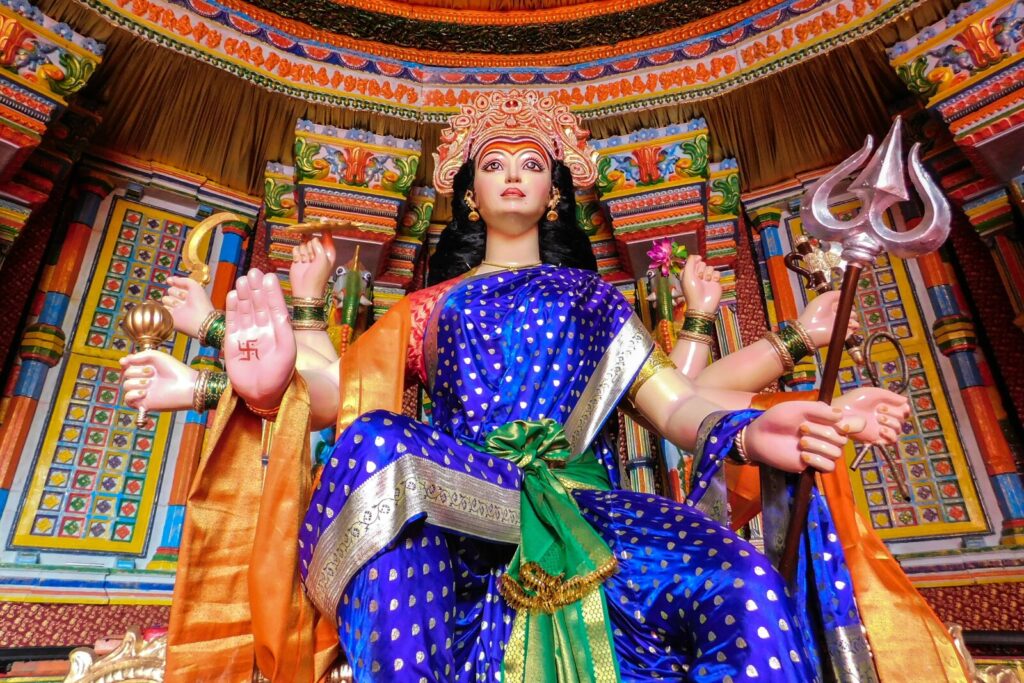Navratri is a nine-day festival which marks the victory of good over evil. It is one of the most significant festivals in India and is celebrated with great vigour and devotion in various parts of the country. Navratri is dedicated to the worship of the Hindu goddess Durga and her various forms. The festival is marked by fasting, praying, and performing various rituals. This blog will discuss the Navratri Puja Vidhi and Rituals Explained Step by Step.

Day 1-3: Pratipada to Tritiya
The first three days of Navratri, are dedicated to the worship of Goddess Durga in the form of Shailputri, Brahmacharini, and Chandraghanta. Keep the lamp on the left side of the Goddess Durga’s deity. Try to light the ‘Akhand Jyot’. On these days, people perform the Ghatasthapana ritual. A clay pot is filled with soil, and barley seeds are sown. The pot is kept in the puja room, and daily offerings are made. Goddess Durga is invoked and is requested to accept our prayers and to bless us by residing in the Kalash for nine days.
Day 4-6: Chaturthi to Shashthi
The fourth to the sixth day of Navratri is dedicated to worshipping Goddess Durga in the form of Kushmanda, Skandamata, and Katyayani. These days, people perform the Saraswati Puja, which involves the worship of the goddess of knowledge and learning. People also perform the Kanya Puja, where young girls are invited to the house and offered food and gifts as a form of respect and worship.

Day 7-9: Saptami to Navami
The seventh to the ninth day of Navratri is dedicated to worshipping Goddess Durga in the form of Kalaratri, Mahagauri, and Siddhidatri. On these days, people perform the Sandhi Puja, which is performed at the juncture of the eighth and ninth days. The puja is performed at the exact moment when the Ashtami Tithi ends and the Navami Tithi begins. The Sandhi Puja is considered one of Navratri’s most important rituals.
On the tenth day, also known as Vijayadashami, people perform the Durga Visarjan. This is the end of the Navratri festival. The clay pot used for the Ghatasthapana ritual is taken out of the house and immersed in a water body. The ritual symbolizes the departure of Goddess Durga from the house.
It is a time when people come together to worship Goddess Durga and seek her blessings. The Navratri Puja Vidhi and Rituals Explained Step by Step. Hope this was useful to you. Moreover, it is important to remember that Navratri is not just about performing rituals. It is about spreading love, happiness, and positivity.
Facebook | Instagram | YouTube | Goodreads | Artwork | Books | Journals – Diaries – Notebooks | Author Central Page | LinkedIn
For collaboration, workshops and to come as a guest at my podcast (the healing tree) please hit an email – spiritedblogger707@gmail.com


